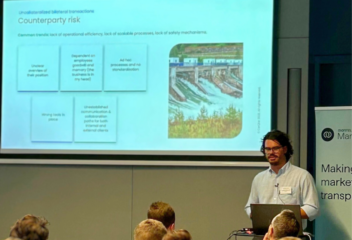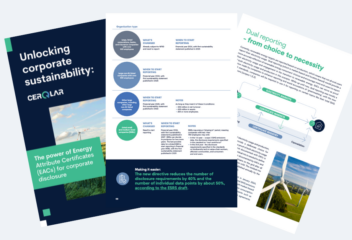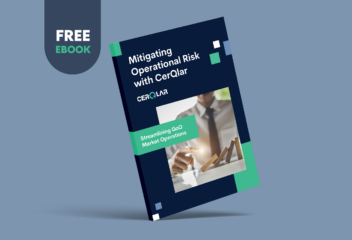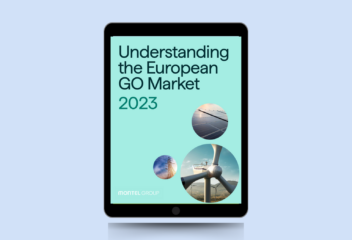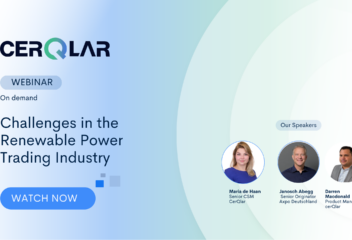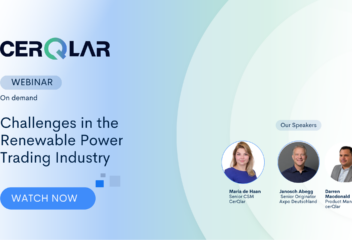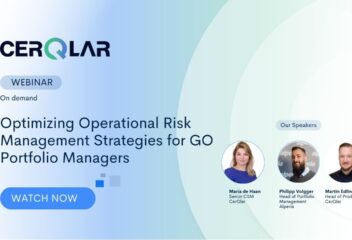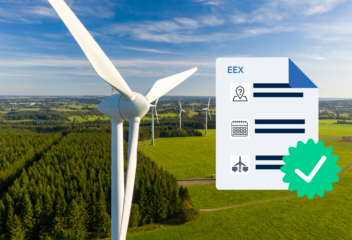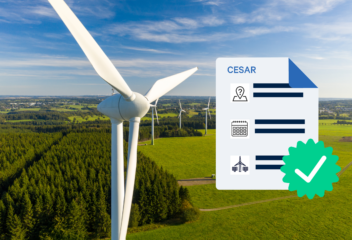What 100s of hours of interviews with GO market participants taught us
We hosted a webinar to share the insights we’ve gained through hundreds of hours of interviews with GO market participants. Our objective is to standardize the Energy Attribute Certificate (EAC) markets and enable participants to keep up with ever-developing demands.
To develop our solution, we interviewed hundreds of participants in the GO market to find out their perspectives, pain points, and aspirations for the future and hosted a webinar to share the insights we gained from these interviews.
Would you like to learn what CerQlar looks like? Schedule a demo.

The webinar was moderated by Konstantinos Sklavenitis, our account manager, and featured Martin Edling Anderssen, CerQlar’s Principal Product Manager, and G Young Van, our User Experience Designer.
The interviewing process
The interviews included contributions from every level of the GO market and were held with GO traders, portfolio managers, power originators, heads of IT, and mid and back-office staff. Interviewees also included risk managers and compliance officers, to a lesser extent. The interviewees came from organizations working in the corporate, production, utility, and supply sectors in the wholesale electricity market across Europe and the US. They were carefully chosen from across the spectrum of the GO trade lifecycle to ensure that our research provided as thorough an understanding as possible of the stages and challenges of capturing, managing, and settling GO trades.
These interviews are an ongoing part of our design thinking process, starting since CerQlar began two years ago. The process began with large volumes of discovery interviews for the first six months after CerQlar’s inception before we went into design mode. Since then, we’ve continued working with design partners throughout the process to test and re-test each design and feature iteration. We meet with our partners weekly, and our current product is built on the foundation of countless hours of listening to our partners and observing their challenges.
We also used design thinking strategies to ensure our product caters directly to our users’ needs. Design thinking is an iterative process that relies on understanding the people we design for through observation and experimentation. Before we began any design processes, we started from scratch, viewing our users’ goals and challenges from a “Beginner’s Mindset” and understanding the state of the GO market from the perspective of actual participants.
What we learned about the Guarantee of Origin market
These studies brought three crucial findings to our attention, which kept cropping up over hundreds of hours questioning a diverse range of interviewees.
The process of managing GO trades and inventory is practically untouched by technological innovation
Unlike comparable industries, such as the financial market, much of the renewable energy certificate trade process is still managed manually. Participants revealed that they still rely on outdated technology such as spreadsheets, email, and even phone calls to manage trades and inventory. This results in information being siloed in each participant’s inventory, which must then be exchanged via email or other manual communication. Contracts are shuttled to various users via email, and certificate deliveries are complex and unwieldy.
The lack of specialized solutions
While there are frequently systems in place to deal with physical power, there aren’t any specialized systems designed to deal with Energy Attribute Certificates such as GOs. As a result, many operations have to be performed manually or by using three or four systems at once to register a trade. In addition, complex actions such as checking off which papers have been paid must be performed manually, dragging out the settlement process.
The need for standardization
All EU registries adhere to the AIB specifications backend, but the data and the functionality they expose to the end users vary greatly. Although you would expect the results of exporting your GO registry to be similar across registries, the formats and the data available are anything but uniform. In addition, a large number of frameworks don’t offer an API. This makes it difficult to keep track of certificates and transfers, particularly when they involve multiple registries.

CerQlar integrates with HKNR. Talk with us to learn more.
Book a discovery callWhy these insights about the GO market matter
All of the above issues have created an untenable situation in which transactions must be manually recorded across different systems, draining time and effort. The need for a single source of information that would provide standardization and automation is urgent. CerQlar is designed to be that one source of information by allowing you to manage the entire process on a single platform uniformly. Storing information in a uniform way makes automating activities possible and allows you to manage your positions even when your inventory is spread out across many registries.
With each organization accustomed to doing business its own way, we need to bring a standardized way of doing business to the market. All marketplaces need standards to create the degree of predictability required for automation.
Creating a standardized, innovative user experience using Design Thinking
Our interview process didn’t just have a big impact on the product as a whole but also on its usability. The UX team narrowed it down to three crucial findings:
Create a common but improved journey
Each organization is unique, and even within an organization, there are many different preferences and use cases to contend with, but we identified a common user journey in our research. Basing our design on this journey makes it easier for users to adapt to the platform and organize their tasks better. For example, current market expansion has led operators to take on additional tasks as it is unclear whose roles the tasks fall under. We want to help our users avoid this ambiguity by creating a clearer and more transparent workflow for everyone involved. The simplest way to do so is by creating a standardized user journey that allows room for innovation.
Use frameworks users are familiar with
People are generally creatures of habit and prefer an interface that is intuitive to use or familiar. Knowing which systems users are familiar with gives the design team invaluable information that could be used for design decisions. For example, many of our users managed their portfolios with spreadsheets, so we implemented the spreadsheets’ design language and flexibility into our platform. This allows users to immediately take to the interface, as their familiarity with the layout and processes makes navigating the platform intuitive. Many users have already shared positive feedback and begun thinking of future feedback to share so we can make our platform even better!
Small changes can have significant effects
Our user interviews revealed critical insights we could only gain from our users. Platforms that require users to add more information throughout the trading process require traders to invest more time. Adding features such as frequently-used groups instead of expecting users to click the issuing countries individually has significantly impacted the time users need to invest in each trade. Users highly valued a simple change that presented a relatively small technical challenge for us.
Implementing the data to create a better product
Knowing that most registries don’t offer an API connection, we offered users the option of uploading inventory files from non-API-enabled registries while API registries sync automatically. This allows users to view their inventory across registries easily. Additionally, the platform guides the users to perform tasks at the registry (such as transfer). Finally, the data collected from registries is unified into a single format, which users can easily use to manage their certificates.
Many insights we identified through research could be traced back to the lack of automation, standardization, and a single source for viewing data in the renewables market. The CerQlar platform provides the automation tool that solves these challenges, making it easy to migrate data which is then uniformly presented. This allows you to address both the short-term challenge of meeting current transaction obligations and the general challenge of managing your portfolio in the long term.
It also allows you to seize opportunities and keep up with market changes as they occur. By helping our customers optimize their trading activities, CerQlar is becoming the go-to settlement solution for any environmental commodity.



